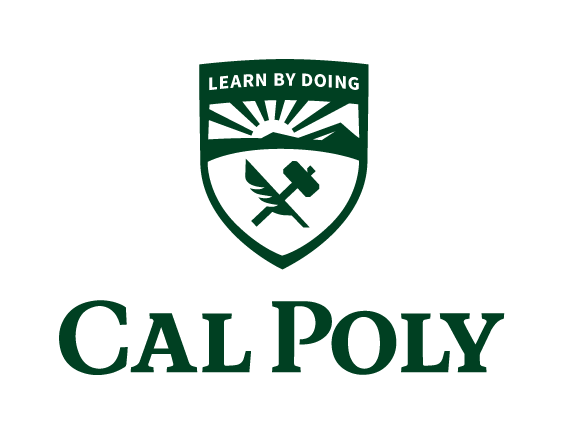Home Sweet Home
Purchasing property, or settling in certain areas, was not an option equally available across ethnic groups. Despite the hurdles of discrimination—laws barring Asian immigrants from purchasing property, dispossession of Native American lands, or housing covenants that created segregated neighborhoods— some individuals still found ways to make a home on the Central Coast. Discover how Black, Asian, and Italian families made their homes clicking through the photographs.
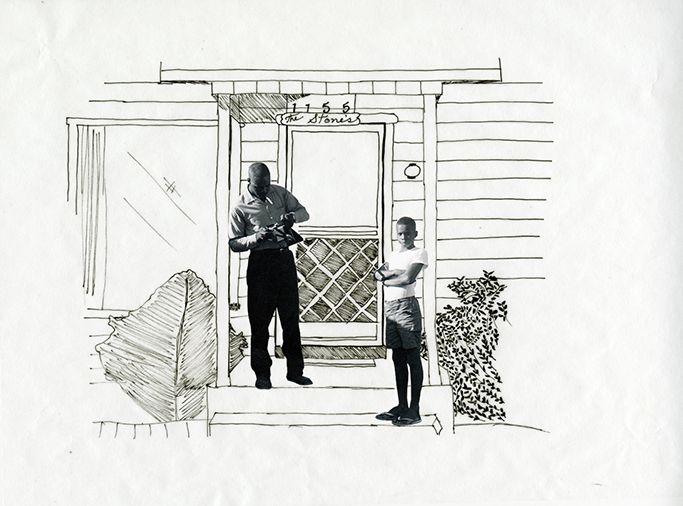
Home
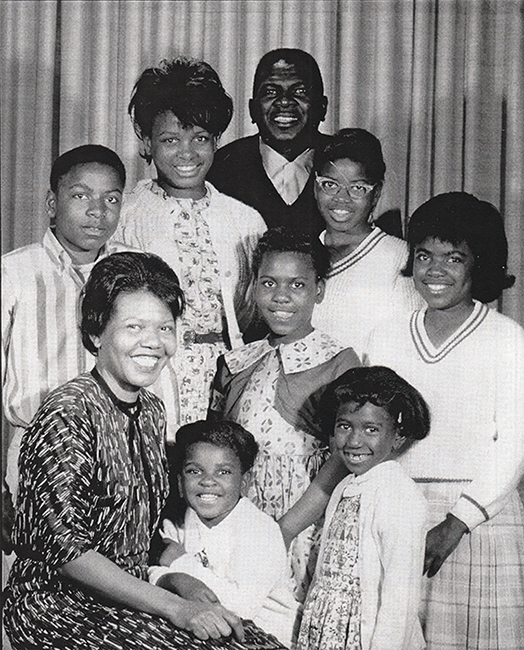
As newlyweds, Jessie Stone and her husband, Thomas Stone, traveled to California by way of Baton Rouge, Louisiana and Texas. In California, they first lived in Santa Barbara, and eventually settled in San Luis Obispo County in 1949. The Stones migrated westward in search of similar jobs and dreams as many other Americans. Although their search often proved frustrating, the Stone family thrived, as they were grounded in their strong spiritual beliefs and civic commitment to their community.
“We pulled into San Luis to the first realtor office we could find. I asked for
a list of rentals and the office clerk clammered at me, ‘We have nothing to rent for coloreds.’ After that we looked elsewhere for housing and eventually found a house in South County.”
– (Jessie Stone)
The Stones faced similar opposition when they bought their first home in Arroyo Grande. In protest of the discriminatory attitudes of neighbors, they painted their house black.
“We moved from the south and from Texas to escape these attitudes, yet California still had these attitudes. My husband was the anchor for the family. Being a Black man, how many insults can you take in a day? But he was witty, and graceful, and spiritual in his response to the bad behaviors and attitudes towards him.” – (Jessie Stone)
Thomas E. Stone Family
Archival photograph. Thomas E. Stone Family. Photo from the Henry Stone Family photo album. Courtesy of Jessie Stone. From the Exhibit “Objects of Affection.” Robert E. Kennedy Library, Cal Poly San Luis Obispo, California.
Additional Sources:
C. Trujillo personal interview with Mrs. Jessie Stone, March 15, 2014.
Stone, Jessie (2014, March 4). “Spiritual Grounding,” Interview by Winter ES 320 students under the direction of Denise Sheridan [Video recording]. The Re/Collecting Project, Cal Poly, San Luis Obispo.
Thomas Stone
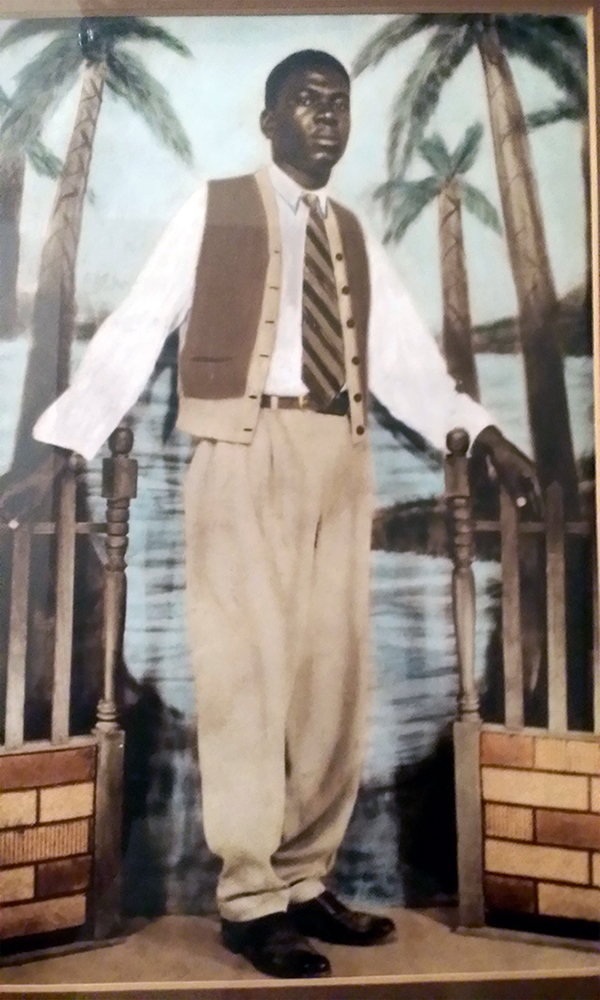
Jessie and Thomas Stone were the first African American business owners in the city of Grover Beach. Their son, Malcolm Stone, was the first African American policeman in San Luis Obispo. At the time, the San Luis Obispo chapter of the National Association for the Advancement of Colored People was fighting for the rights of the region’s African American community, focusing on rights and violations in housing, real estate, and barbershops. The Stones faced discrimination in their first attempt to find housing in San Luis Obispo.
“We pulled into San Luis to the first realtor office we could find. I asked for
a list of rentals and the office clerk clammered at me, ‘We have nothing to rent for coloreds.’ After that we looked elsewhere for housing and eventually found a house in South County.”
– (Jessie Stone)
Jessie Stone
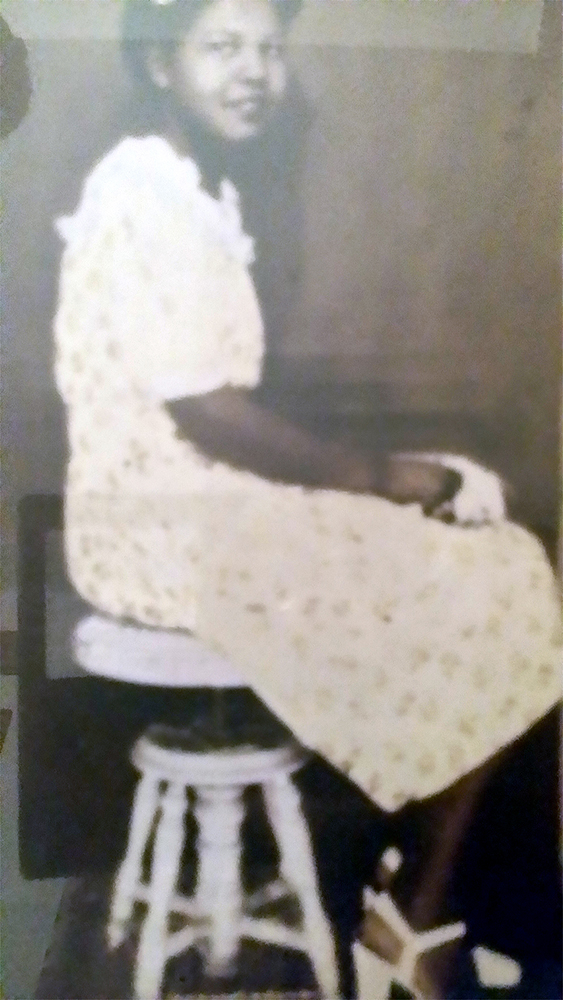
The Stones supported their family of eight children by working many jobs, and eventually opened A-1 Sewing and Vacuum in Grover Beach.
“At first, we worked whatever job we could find, but I was able to open up a beauty shop in Pismo. The neighboring [white-owned] businesses were opposed to us opening up the shop. They didn’t want me to have a building and created a problem by not allowing me to have parking space on the street. This caused a lot of stress; however, we were determined. We kept that going for about nine years. After that, then my husband opened the sewing and vacuum business. We had the same problem finding a building. It was very uncomfortable, but we succeeded as business people. Some weren’t ready for Blacks to be downtown, I guess. They objected to our being there, but we opened legitimate businesses.” – (Jessie Stone)
Jessie Stone
Archival photograph. Portrait of Jessie Stone. Jessie Stone and her husband Thomas Stone, met in Baton Rouge and enjoyed having their portraits taken in a little camera shop on the street. Jessie Stone treasures these portraits because they were taken before their marriage. Baton Rouge, Louisiana. 1945. Courtesy of Jessie Stone. From the Exhibit “Objects of Affection.” Robert E. Kennedy Library, Cal Poly San Luis Obispo, California.
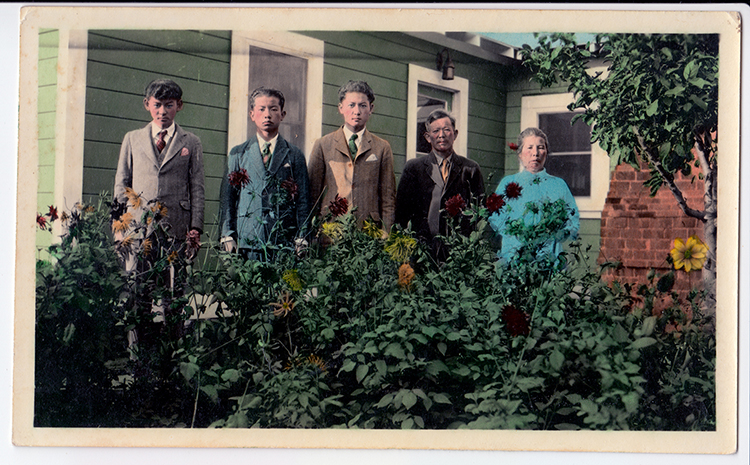
Other Homes
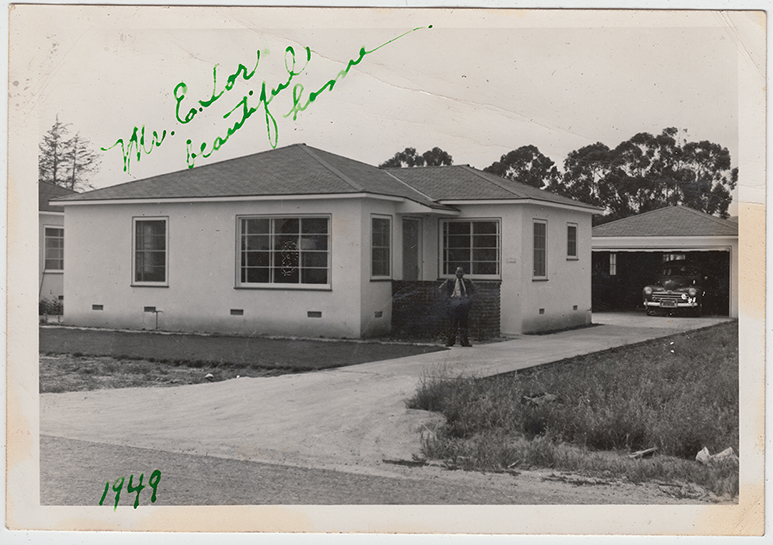
Eulogio Lor’s Home in Arroyo Grande
Archival photograph. Eulogio Lor’s new home in Arroyo Grande, CA. Eulogio was a shareholder of the P.I. Market in Pismo Beach, CA. 1949. Courtesy of Ronald Edar. From the Exhibit “Objects of Affection.” Robert E. Kennedy Library, Cal Poly San Luis Obispo, California.
Another View
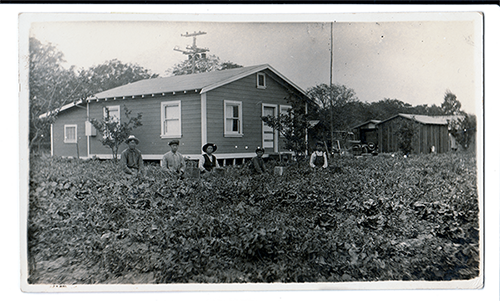
XYZ
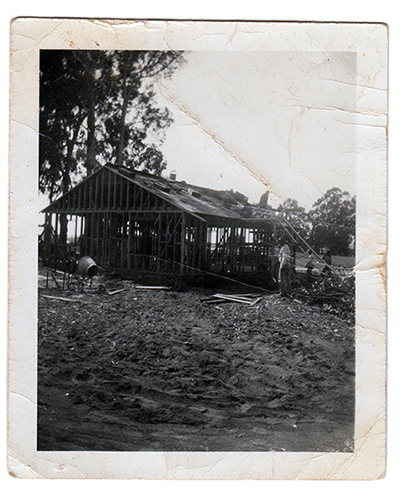
Hilario Ped Home
Archival photograph. Hilario Ped built his family home in Oceano, California in 1947. When his daughter renovated the home years later, she found the pipe in one of the walls where he must have left it when he built the home. Courtesy of Nina Ped Borja. From the Exhibit “Objects of Affection.” Robert E. Kennedy Library, Cal Poly San Luis Obispo, California.
In 1913 and 1920, California state legislature passed alien land laws which barred aliens who were ineligible for citizenship, such as Asian immigrants, from owning or leasing land.
Some Japanese immigrants found ways to circumvent the law by purchasing land under the names of their U.S.-born children or creating corporations that purchased land. Filipinos were also prohibited from owning land. Celestino Alfafara was a Filipino who came to the U.S. at the time when the Philippines were under U.S. colonial rule. Alfafara fought on behalf of all Filipino nationals to own property in a 1945 California Supreme Court case, Alfafara v. Fross. The court held that Alfafara was legally not an “alien” but a U.S. National, and thus not subject to California’s alien land law. This monumental case enabled land ownership for many Filipinos.
Click through the photograph to glimpse how Asian immigrants made the Central Coast their homes.
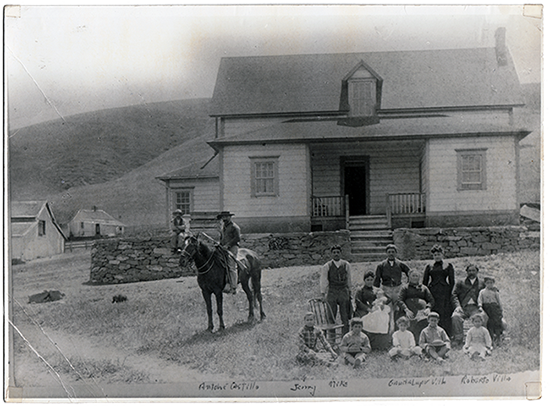
The Old Packard Truck at work in Cayucos
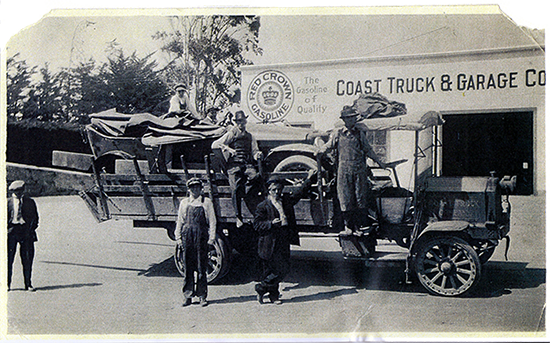
Villavicencio descendent, Arlene Zanchuck, shared her family’s legacy in a Re/Co interview:
“I am sixth generation Californian, unless you count my Salinan Indian roots. My grandfather Roberto [Villavicencio] changed our family name to Villa and married Guadalupe Higuera, of the family Higuera Street is named for. They struggled to hold onto the rancho during the drought in the 1800s. He lost the rancho, but he continued on and opened a trucking business with his son, my father, Frank—Coast Trucking & Garage. They also built a new home in Cayucos. The trucking company trucked milk from ranches along the Cayucos coast to creameries like Harmony Dairy in SLO.” – (Arlene Zanchuck)
Archival photograph. The Old Packard Truck at work in Cayucos, CA. Frank Villa is standing on the running board. Americo Righetti is standing next to Frank. The truck cost $3,300. c. 1912. Courtesy of Arlene Villa Zanchuck. From the Exhibit “Objects of Affection.” Robert E. Kennedy Library, Cal Poly San Luis Obispo, California.
Wedding Photo of Arlene Villa and William Zanchuck
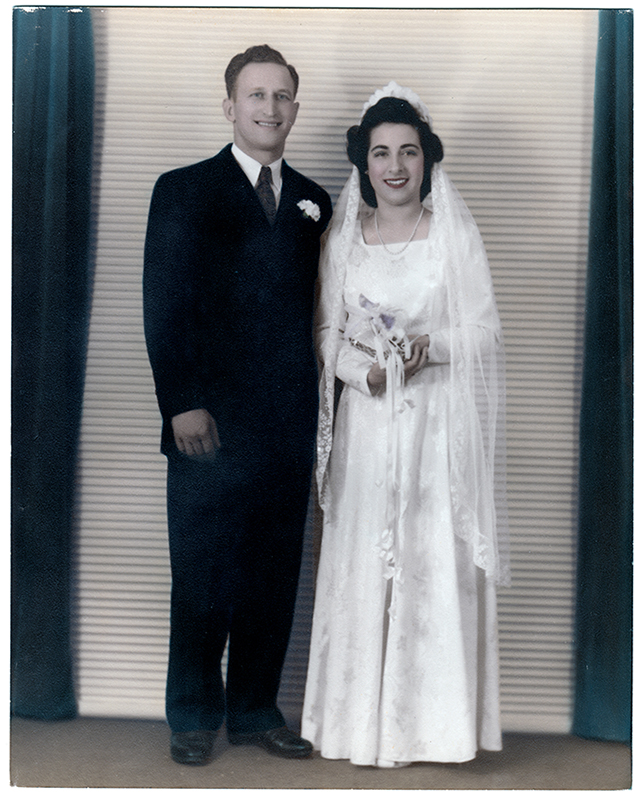
After World War II, Arlene with her husband, William “Bill” Zanchuck, built their own home next door to her parents.
“We were engaged only five months. My wedding was very simple and I made my own dress. We married at the Mission downtown. Bill was just out of the service so we had little money for a reception, which cost us seventy-five dollars at the Anderson Hotel.” –(Arlene Zanchuck)
Arlene and William were able to fund the building of their home under the provision of the G.I. Bill which offered low-interest, zero down payment home loans for servicemen.
Archival photograph. Hand-tinted studio portrait of the wedding of Arlene Villa and William Zanchuck. They were married at the Old Mission Church in San Luis Obispo, CA. April 28, 1946. Courtesy of Arlene Villa Zanchuck. From the Exhibit “Objects of Affection.” Robert E. Kennedy Library, Cal Poly San Luis Obispo, California.
Home
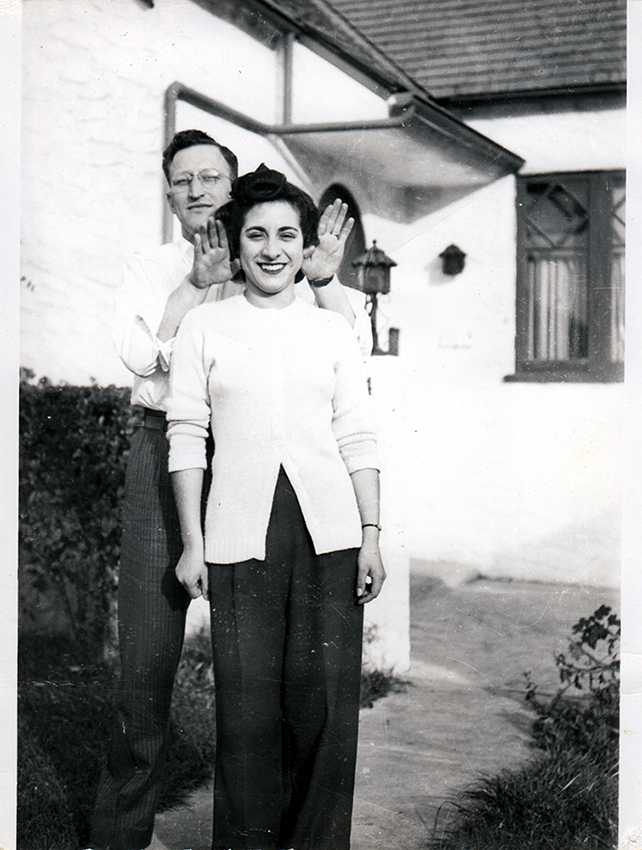
As Mexico gained independence from Spain and the missions were secularized, land previously owned by the missions was granted to individuals. Arlene’s great-grandfather, rancher Rafael José Serapio Villavicencio, was the original grantee for the Rancho San Geronimo Mexican Land Grant. After his death, the rancho was passed onto his son, Roberto Villavicencio, who continued ranching until the mid-1860s. Arlene’s father, Frank, was Roberto’s youngest child in a line of ten children.
Arlene’s father, Frank Villa, and his Swiss-Italian wife, Cora Pedrotta Villa, moved from Cayucos to San Luis Obispo in the early 1940s, before World War II. The move was prompted by the loss of Frank’s ranching job. With Arlene’s encouragement, they bought their home at 24 Mt. Pleasanton, now Chorro Avenue in San Luis Obispo.
“There was a demand for housing during the war [World War II] because the servicemen had wives with them and they needed places to live. So, Mom and Dad would rent to the soldiers and the student aviators at Cal Poly.” –(Arlene Zanchuck)
After World War II, Arlene with her husband, William “Bill” Zanchuck, built their own home next door to her parents.
Arlene Villa Zanchuck and her husband William Zanchuck
Archival photograph. William Zanchuck and Arlene Villa Zanchuck at the home of Arlene’s parents, Cora and Frank Villa, 24 Chorro Street, San Luis Obispo, CA. Courtesy of Arlene Villa Zanchuck. From the Exhibit “Objects of Affection.” Robert E. Kennedy Library, Cal Poly San Luis Obispo, California.
San Geronimo Ranch and Villa Family
Archival photograph. The Villavicencio (Villa) Family at San Geronimo Ranch. Courtesy of Arlene Villa Zanchuck. From the Exhibit “Objects of Affection.” Robert E. Kennedy Library, Cal Poly San Luis Obispo, California.
The Villavicencio family has a diverse history and multifaceted connection to the Central Coast through ranching, dairying, trucking, and auto-mechanics. Villavicencio descendent, Arlene Zanchuck, shared her family’s legacy in a Re/Co interview:
“I am sixth generation Californian, unless you count my Salinan Indian roots. My grandfather Roberto [Villavicencio] changed our family name to Villa and married Guadalupe Higuera, of the family Higuera Street is named for. They struggled to hold onto the rancho during the drought in the 1800s. He lost the rancho, but he continued on and opened a trucking business with his son, my father, Frank—Coast Trucking & Garage. They also built a new home in Cayucos. The trucking company trucked milk from ranches along the Cayucos coast to creameries like Harmony Dairy in SLO.” – (Arlene Zanchuck) .
